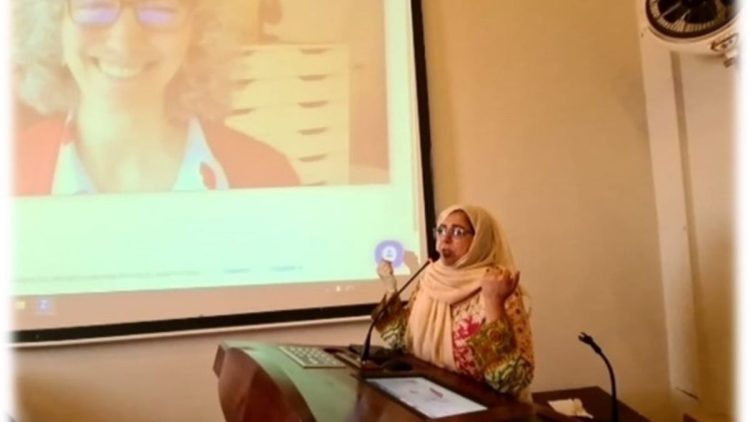Welcome to this blog series on Nonviolent Communication in a mediation context. We will begin by walking through the basics, then take a deeper dive into the practical applications in a subsequent article. This series aims to pique your curiosity, and to introduce you to the possibilities of adopting NVC in your mediation practice. So, let’s begin!
What is Nonviolent Communication?
Nonviolent Communication (NVC) is a communication method developed by Dr Marshall Rosenberg (CNVC, n.d.) to effectively communicate the heart of what we need in our interactions with others. NVC remedies the conflict and miscommunication that results when we use language which ascribes blame and judgement to others. While NVC is a communication tool, it is also a linguistic theory on the origins and persistence of violence, as well as a worldview or spiritual framework. The core assumption of NVC is that all human beings share common emotions and needs, that when communicated effectively, are far more likely to be heard and responded to. NVC theory suggests that we have learnt a language of blame and judgement because hierarchical societies benefit from us being alienated from our emotions and our human needs. According to NVC, when conflicting parties can connect to one another’s needs, the problem resolves itself. Where language which ascribed blame, shame or judgement causes alienation and conflict, language which centres feelings and needs assists parties to hear clearly and to feel heard, and thereby connect to themselves and one another.
NVC applications in mediation
So, what does NVC have to do with mediation?
NVC can support mediation practice in the following ways:
- To improve the mediator’s ability to effectively empathise with conflicting parties
- To build a vocabulary of feelings and needs and thereby assist conflicting parties in understanding their own feelings, needs, interests and motivations
- To improve the mediator’s ability to separate people from the problem and to remain grounded and neutral when confronted with difficult actors.
Giving and receiving empathy is the cornerstone of NVC. Empathy is characterised in NVC as a universal human need to be understood. Empathising with a party does not mean agreeing with, nor sympathising with their position – both of which run the risk of alienating the opposing party. The skill of empathy is the ability to be fully present with what is alive in another person; to deeply listen and thoughtfully reflect the experience of a party. Receiving empathy can act as a “pressure release valve” (Seid, 2020) that lowers the emotional charge and allows a conflict party to feel heard and thereby open to the possibility of listening.
NVC can be particularly useful in the interest gathering phase of a mediation. Conflicting parties who are attached to specific positions and strategies may themselves be unaware of their emotions and their true needs in the conflict! A mediator who is versed in NVC can assist the conflicting parties, through the skill of deep listening, to illuminate the needs underneath their positions.
A third application of NVC in mediation is the ability to stay emotionally grounded through adopting an NVC consciousness. NVC consciousness is the embodiment of the NVC worldview, rather than the practical application of the method. With this consciousness, it becomes easier to separate the people from the problem. When confronted with difficult actors, the mediator understands that they share common human needs that the actor is attempting to meet, albeit through costly strategies. Conflict parties, in this case, are never malignant. We needn’t view people as bad, uncompromising or difficult, and therefore we are not invested in judging them. In this case, the problem is always the parties´ inability to hear or understand each other’s needs and/or their fear that their needs will go unmet, and never the people themselves.
The NVC method
The method of communicating using NVC comprises 4 steps:
- Observation
Clearly communicating the situation or behaviour which has either met or not met our needs, without ascribing blame or judgement
- Feelings
Communicating the feeling which was stimulated by the situation or behaviour
- Needs
Describing the human need connected to the feeling
- Request
Making a request of another/ourselves (not a demand), in order to meet the need
While the method is straightforward, the practice is challenging. You are attempting to break a lifetime habit of analysing, judging, prescribing and critiquing the behaviour of others. The process can feel awkward at first, which is to be expected when you are learning a new language! While it may not be necessary or practical to follow the four-step method during a mediation, the NVC consciousness can guide you to ask questions that clarify the heart of the matter. Let’s look at an example of how a mediator might use NVC to help a party identify their needs:
Mediator: “So, what is most important to you?”
Conflict party: “I want full custody of the kids and I won’t settle!”
Mediator: “Okay, and what need would that meet for you?”
Conflict party: “It’s just what’s best for the kids!” “I’m far more stable and they need stability!”
Mediator: “So, you value the wellbeing of your kids, and creating stability in their lives?”
Conflict party: “Yes! Kids need predictability!”
Mediator: “Would it be accurate to say then that the most important things for you are supporting the wellbeing of your kids by making sure they have stability and predictability in their lives?”
Conflict party: “Exactly”
Without a doubt, many of you are already skilled mediators who would have offered this clarity without any knowledge of NVC! However, what NVC offers is a framework for developing a common language of human needs and emotions, and a compass for getting to the heart of the matter, no matter how messy or intractable the conflict.

Building a vocabulary of feelings and needs
At the heart of NVC is an assumption that all human beings share a set of common emotions and human needs. Becoming familiar with or building a vocabulary of feelings and needs enables the mediator to become attuned to the experiences of conflict parties. The process of learning involves identifying the felt sense of emotion and the corresponding needs in one’s own life experience, then using the experience to make an educated guess of what someone else could be feeling or needing. Because feelings and needs are universal, the guessing process is more accurately a process of tuning in or deep listening.
Accurately identifying the feelings and needs of conflict participants is an invaluable skill for a mediator, because they can assist conflict parties to understand their own motivations and their true interests. The skillset also aids a mediator in effectively applying empathy; empathy that resonates and makes the conflict party feel heard and seen, rather than alienated or misunderstood.
Image 1: Feelings and Needs chart (Rosenberg 1999)
In Summary
Nonviolent communication is an invaluable addition to the mediator’s toolkit, whether purely applying the practical skills, or, adopting the deeper consciousness of NVC. Increasing your literacy of feelings and needs will improve your ability to effectively empathise; listen with openness and offer conflicting parties some insight into the needs underlying their positions.
There are abundant free resources for deepening your NVC learning, and a global community waiting for you to join them! Find out more at:
Citations:
CNVC founder. Center for Nonviolent Communication (CNVC) . (n.d.). https://www.cnvc.org/about/marshall
Seid, A. (2020, December 11). NVC empathy: Empathy is what we need now. Puddledancer Press Books. https://www.nonviolentcommunication.com/learn-nonviolent-communication/nvc-empathy/
Rosenberg, M. B. (1999). Nonviolent communication (NVC) feelings and needs. PuddleDancer Press. https://www.nonviolentcommunication.com/learn-nonviolent-communication/feelings/




































